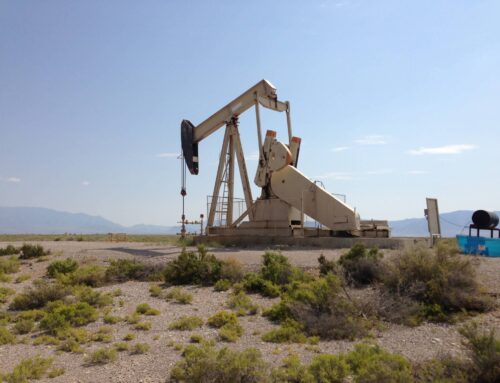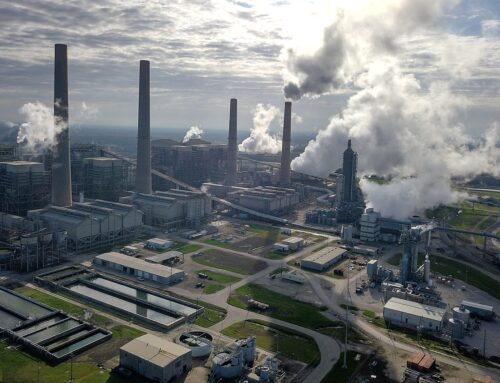***Updated February 15, 2010***
The Department of Energy announced in December 2009 that they would soon issue Treasury-backed loan guarantees for one or two new nuclear reactor projects. Taxpayers should be seriously concerned about loan guarantees to the nuclear industry—proposed reactors have been riddled with cost overruns, delays and significant design problems, all of which can easily lead to taxpayers losing billions of dollars if and when these risky projects default. Even in the heyday of lending on Wall Street, private backers were not interested in investing in new nuclear reactors because of these serious uncertainties. Asking taxpayers to take on this financial risk is fiscally irresponsible.
Background
On June 30, 2008, the Department of Energy (DOE) issued a solicitation for new nuclear reactor projects to apply for $18.5 billion in loan guarantees under its Title XVII Loan Guarantee Program, which was originally authorized by the Energy Policy Act of 2005. The authority to distribute $18.5 billion for new reactors was first granted by the Appropriations Committee for fiscal year 2008, and extended indefinitely in the fiscal year 2009 Appropriations process. Yet the industry requests far surpassed what was appropriated. DOE received 19 applications from 17 electric power companies requesting $122 billion in loan guarantees to cover new reactors projects.
Though DOE has not made an official announcement stating which applicants have been chosen, on May 19, 2009 DOE announced that four companies made it to the final phase: UniStar Nuclear Energy, SCANA Energy, Southern Co., and NRG Energy. Each of these projects have experienced and continue to face rising cost estimates, delays related to reactor designs, and credit downgrades.
Loan Guarantee Applications Currently Under Review
Calvert Cliffs Unit 3 in Maryland, UniStar Nuclear
UniStar Nuclear, a joint undertaking of Constellation Energy and the French government-owned utility Electricité de France (EDF), is planning to build a 1,600 MW reactor at Constellation Energy’s Calvert Cliffs site close to Lusby, Maryland. Plans are to build an Areva U.S. Evolutionary Power Reactor (EPR), a design by the French government-owned company Areva. This design is currently being built in Finland, where it is 75% over budget and at least 3.5 years behind schedule, and in France, where it is two years behind schedule. Even though these reactors are already being built, Areva is modifying its design at the request of the French, UK and Finnish regulators, who are concerned that the day-to-day and the emergency systems could fail at the same time.
The US Nuclear Regulatory Commission (NRC) is in the early stage of reviewing the design. In May 2009, DOE announced that Calvert Cliffs Unit 3 is in the final phase of due diligence for loan guarantees. The Maryland Public Service Commission approved their application for a Certificate of Public Convenience and Necessity on June 26, 2009. On October 30, 2009, in the midst of cash-flow problems, the Commission approved the purchase of 49% of the US utility Constellation by the French utility EDF. The project’s costs have been estimated to be between $6.4 billion to $10 billion for the reactor, not including financing. When financing costs are added, it could increase the price by several billion dollars. Standard & Poor’s Ratings Services recently downgraded Constellation’s credit rating to just above junk bond status, largely because the PSC has forbidden Constellation from relying on its subsidiary, Baltimore Electric and Gas, in the event of cost overruns.
V.C. Summer Units 2 and 3 in South Carolina, SCE&G and Santee Cooper Joint Project
SCE&G, a subsidiary of SCANA Energy, has applied to build two reactors at the V.C. Summer site near Jenkinsville, South Carolina. One reactor is currently operating at the site. SCE&G, along with the state-owned utility Santee Cooper, plan to build two 1,117 MW Westinghouse AP1000 reactors. According to SCANA, the first reactor would come online in 2016 and the second in 2019. Earlier estimates put the cost at around $9.8 billion to build these two reactors. However, in May 2009 SCE&G reported that there could be a more than $500 million increase in costs. This could put SCE&G’s portion of the costs at over $6.8 billion, potentially bringing the price of building the reactors up to nearly $11 billion. Costs are likely to continue increasing with the NRC’s recent rejection of the amended AP1000 design because it may not withstand severe weather events, such as hurricanes, tornados, and earthquakes. The NRC has not issued a final review schedule for completing the design while Toshiba-Westinghouse addresses these serious issues.
Vogtle Units 3 and 4 in Georgia, Southern Co. and Georgia Power Venture
Southern Company has applied to build two 1,117 MW reactors at its Vogtle site in Waynesboro, Georgia, where two reactors are already in operation. Southern Co.’s nuclear division would oversee construction of the two Westinghouse AP1000 reactors and serve as the operator, while Georgia Power (a subsidiary of Southern Co.), Oglethorpe Power Corporation, Municipal Electric Authority of Georgia, and The City of Dalton, Georgia would share ownership, in a similar ownership structure to the one in place for the existing two reactors. Southern Co. was approved for an Early Site Permit in August 2009 and serves as the reference site for the construction and operating license permit for the AP1000. Though initial schedule estimates suggested that the permit could potentially be approved in 2011, the NRC’s AP1000 safety concerns have now caused a likely permit schedule shift for Vogtle. Southern Co. plans for the first reactor to come online in 2016, with the second in 2017, but recent lawsuits might delay the projects. Georgia Power’s share of the cost has been estimated at $6.4 billion, with the cost of the entire project estimated to total $14 billion. The Georgia Public Service Commission has certified Georgia Power’s plan to proceed with Vogtle and the Georgia Legislature passed legislation allowing Georgia Power to charge financing costs to ratepayers in advance of a license. Consumer and environmental organizations have challenged the legislation in state court.
South Texas Project Units 3 and 4 in Texas, NRG Energy and CPS Energy Joint-Undertaking
NRG Energy is planning to build two 1,350 MW reactors at its South Texas Project site near Bay City, Texas. The project was originally proposed to be a joint-venture of NRG Energy, and the City of San Antonio municipal utility CPS Energy to build two GE Advanced Boiling Water Reactors (ABWR). The original cost estimate of the project was $5.4 billion, but in the late fall the cost for the two reactors rose dramatically from $13 billion to $17 billion. The $4 billion cost increase is surrounded by controversy because it was withheld from the CPS Board. Disagreements over the cost increase have led to a lawsuit between CPS Energy and NRG, as well as the resignation of the CPS General Manager amid the investigation into the cost increase. With the lawsuit and both ratepayer and business owner opposition to the new reactors and increased rates, the fate of this project is uncertain. Although San Antonio Mayor Julián Castro is trying to bring the feuding parties to the table, in fall 2009 he stated he did not feel comfortable with CPS’s investment in the project. NRG has expressed concerns that the fighting with CPS Energy could negatively impact the project’s chances of receiving a loan guarantee, but suggested that DOE move forward because other investors may be interested in the project.
Other DOE Loan Guarantee Applicants
The solicitation for the DOE nuclear power loan guarantees brought forth a total of 19 applications from 17 companies in efforts to build 22 new reactors. Although DOE did publicly list these applicants, many companies made announcements stating that they had applied for a loan guarantee. The following is a list of known applicants:
- Nine Mile Point 3 Nuclear Project LLC (a UniStar company): Constellation's Nine Mile Point plant in NY (proposed Nine Mile Point Nuclear Power Station #2). (Suspended)
- AmerenUE: Callaway plant in MO. (Cancelled)
- William States Lee III Nuclear Station in SC: Duke Energy application for a site in SC but a location pursued previously and abandoned. The price tag on this reactor, excluding financing costs, is estimated at $11 billion, which is twice the amount of Duke Energy’s original estimate. Including financing costs, one source put the cost estimate at $14 billion. Duke recently announced a three-year delay in the process, moving expected start up in 2021 instead of 2018, as previously thought. (Delayed)
- Exelon Generation: Victoria plant in TX. (Cancelled).
- Bell Bend: PPL Corp submitted their application for a proposed reactor, Bell Bend, at the Susquehanna station in PA. They plan to build an EPR. The company has estimated the total project cost at $13-15 billion. The Bell Bend nuclear plant would be built near the company’s existing two-unit Susquehanna nuclear power plant
- Progress Energy: a greenfield site in Florida with costs exceeding $17 billion and requiring the largest transmission project in Florida’s history. potential nuclear power plant. (Delayed)
- Luminant Power: Comanche Peak plant in TX (Units 3 and 4).
- Entergy: Grand Gulf Nuclear Station Unit 3 and River Bend site in LA Unit 3.
- Dominion Virginia Power and Old Dominion Electric Cooperative: Dominion's North Anna site in VA (new nuclear unit, called North Anna 3). (Suspended)
View a PDF version of this fact sheet
For more information, please visit www.taxpayer.net
Or contact Autumn Hanna at (202) 546-8500 x112 or autumn@taxpayer.net
January 2010











Get Social